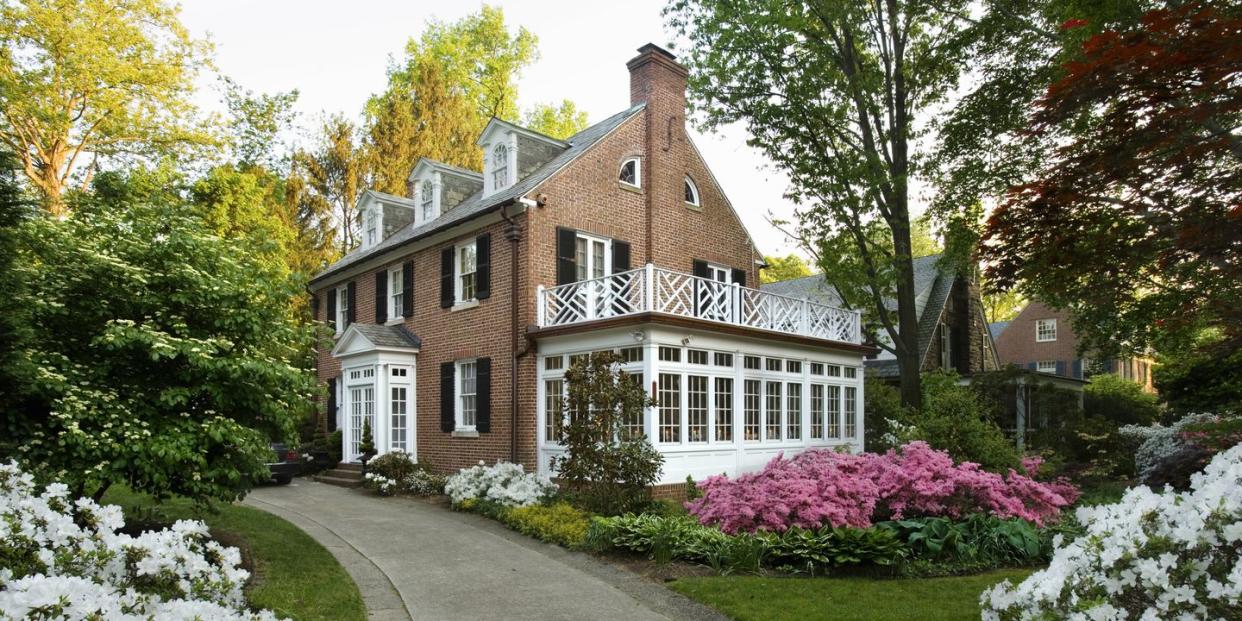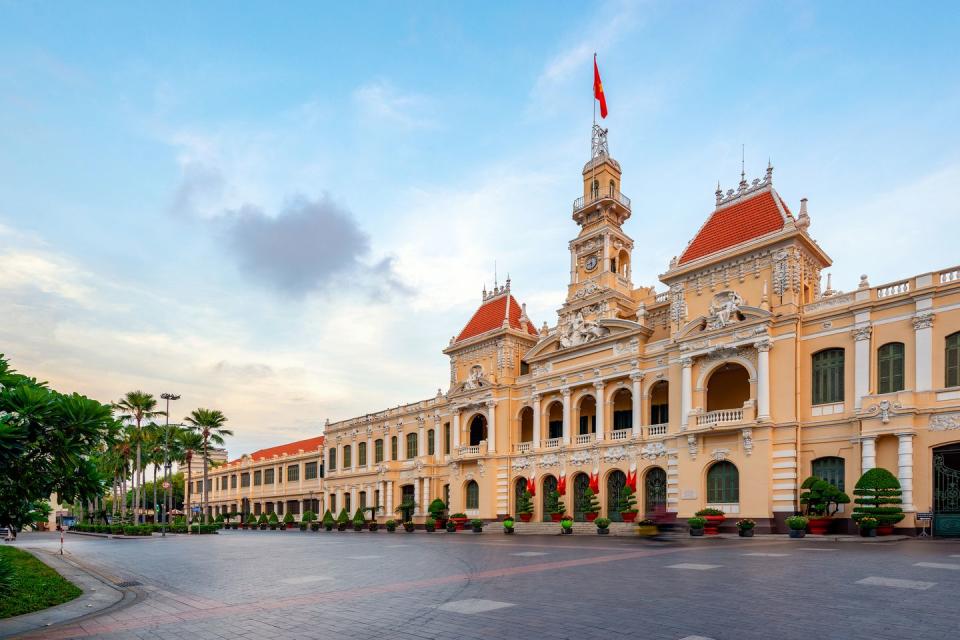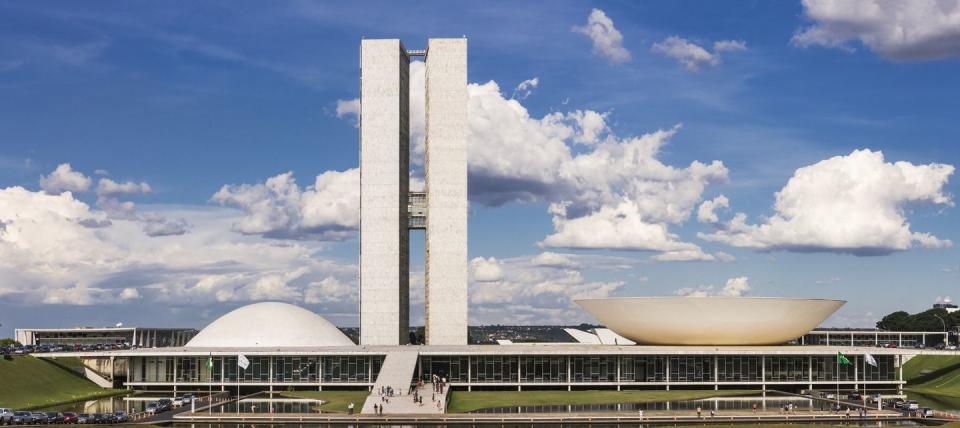How Colonialism Has Shaped the Design World

- Oops!Something went wrong.Please try again later.
Design has long been a dialogue of visual ideas, on a scale as small as between two individuals—say, colleagues who have a brainstorming session—or as large as between two cultures through trade and conquest. From today’s perspective, one of the most influential factors on design in the modern era is undoubtedly colonialism, namely that of European nations whose imperialistic rule spread throughout the rest of the world from the 16th to the 19th centuries.
“The English mode of conquering was to occupy foreign territory and reproduce their society on it. The process was what they called transplanting; hence they referred to the territories as ‘transplantations’ or ‘plantations,’ for short, a term they applied everywhere from Ireland to the plantations of Rhode Island,” says Alexander von Hoffman, Senior Research Fellow at the Harvard Joint Center for Housing Studies, who notes that the term was only later applied to the slave-labor farms in the American South. And a large part of the English’s societal reproduction in its colonies was architecture and design.

During the colonial era, neoclassicism reigned supreme in Europe, and, with rapid colonization, it quickly spread around the world—just look at the civic architecture of the United States in Washington, D.C., and New York, or that of Buenos Aires, Argentina. Yet while neoclassicism was the general rule, vernacular styles and local materials inevitably slipped into the mix, creating new architectural modes with a mélange of cultural influences.
“There are always adaptations that come somewhat naturally. They’re not even necessarily conscious,” says Alex Krieger, Research Professor in Practice of Urban Design at the Harvard University Graduate School of Design. “If you design a neoclassical building that the British government says you should build, you, as a local architect—your hand might slip a little bit, and your design acquires a slightly more vernacular style.”
That’s why colonial-style architecture doesn’t look identical around the world. Vietnam, Cambodia, and Laos, for instance, have many French colonial–style buildings, but they’re largely imbued with local architecture details—say, borrowed from ancient temples. In the United States, colonial-style homes were often constructed from local wood rather than stone, as they would’ve been in England.

These fusions of design weren’t limited to the regions in which they developed. “One interesting example is the bungalow. It originated in India as a warm-weather structure, but the British re-exported the type all over the empire,” says von Hoffman. “In North America, builders reproduced them with their characteristic half-story dormers, then they evolved as part of the Arts and Crafts Movement, and eventually they reached Chicago, where bungalow houses were built for working- and middle-class households in brick, but only barely resembling the original form.”
This sort of design fluidity with global influences has been happening, well, pretty much forever. Take Moorish design from the Iberian peninsula, creating during the eighth-century Muslim conquest of Spain, or the ancient city of Jerusalem, where thousands of years of conquest by varied cultures have created an eclectic architectural landscape. As long as global cultures remain connected—either by trade or forcible conquest—design typologies will continue to meld.
“Then at what point does an adopted language become the vernacular for that culture?” asks Krieger. “You could even say that neoclassical architecture in America as related to public buildings is now our vernacular. Is Washington D.C. in its monumentality representing Britain or Germany? No, it’s become our vernacular for public buildings.”

But that take is, however, something of a product of our contemporary perception of the timeline of design. During the modern colonial period, the imposition of Eurocentric modes of architecture was quite commonly linked to hierarchical status, where colonial-style architecture often asserts the superiority of the colonizing power.
“If the American colonial versions of neoclassical styles had any significance, it was that the colonials were fixated culturally on the home country and felt their buildings expressed or bestowed status to the extent they reflected architectural styles prevalent in European and British society,” argues von Hoffman. “However, the lack of such neoclassical architectural elements on structures built for native or enslaved people is significant in that it reflects the attitudes of the ruling colonizing class.”
Today, it’s impossible to think of European colonialism without its negative impacts on cultures around the world, but it’s equally impossible to ignore the influence of colonialism on design, especially architecture. "Around 80 percent of the world was colonized by Europe and continues to hold the architectural and design legacy of European colonialism, so about 80 percent of the world’s population is 'local' to a country, city, or village impacted by colonial-era architecture and design," says Jennifer Rittner, founder of communications agency Content Matters and an educator at the School of Visual Arts in New York.
Inevitably, this broad reach across the global population means that sentiments about colonial-era architecture vary greatly. "The colonial styles such as Greek Revival may express the democratic tradition held in some places, which can be positive," says architect Victor Body-Lawson. "For other populations, this symbolism may not hold. Instead, it is seen as that symbol of power and the era of foreign dominance."
There's no doubt that from a purely aesthetic basis, colonial-style architecture can be appreciated as beautiful. "Vernacular architecture was simple, focused mostly on function and economy, while colonial architecture was focused on decoration and beauty," says Dominican Republic–based architect Elvis Alcequiez, who suggests this architecture is the best legacy to come out of the colonial era.
But what the architecture stands for is another story. "Colonial-era architecture and design are problematic in how they established control and codified norms of behavior that intentionally disadvantaged the many on behalf of the few," says Ritter. "If we read them as reminders of that past, then we can also see how we continue to be impacted by those norms of behavior today."
She does point out that given the ubiquity of such architecture across the world, and the length of time that has passed since the colonial era, colonial structures "have been rendered invisible" as "part of the background of our daily lives."
These days, in the era of decolonization, architecture has largely departed from colonial modes; many nations have developed a new visual vernacular indicative of their postcolonial identity. Brazil, for instance, founded the modernist utopia of Brasília in 1960, with an urban plan designed to forge a new nationalism through progressive architectural ideals. And today, many African architects work under the umbrella of the Afrofuturism artistic movement, which envisions and realizes a future as seen through the Black lens. But that doesn't erase the past—colonial-era architecture is still very much visible around the world.

"It would seem that any question of colonial-era architecture's contemporary impact is very much wound up in the complex narrative of how African, European, and Indigenous populations, and later immigrants, have made culture together in that space over hundreds of years, and have therefore claimed ownership over those structures and spaces that have shaped their lives," says Ritter of her experience visiting Salvador, Brazil, the closest major city to her family's village of Bahia. Indeed, that notion applies to virtually any place with a colonial past. "The culture that has grown around that architectural legacy is not erasable," Ritter adds. "It’s a reflection of the resilience of the people who have made their own what was once created to dominate and destroy them."
Follow House Beautiful on Instagram.
You Might Also Like

